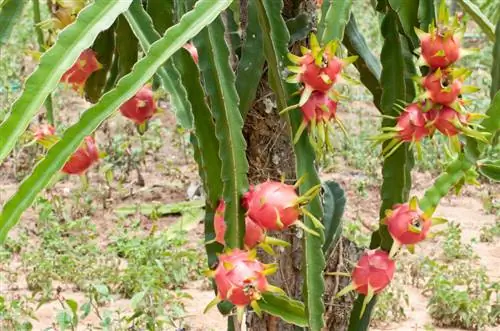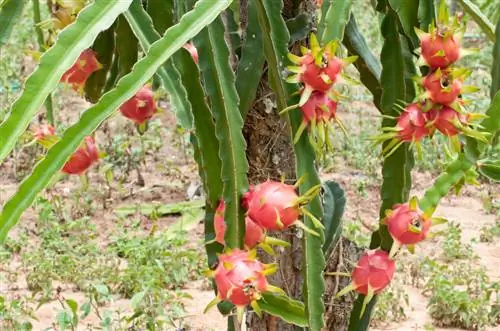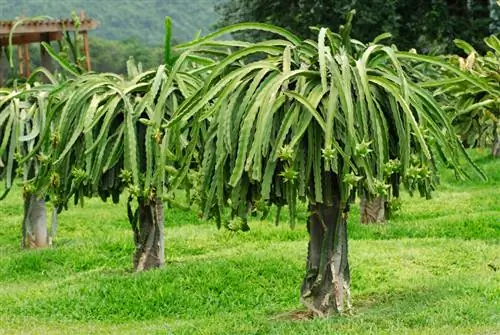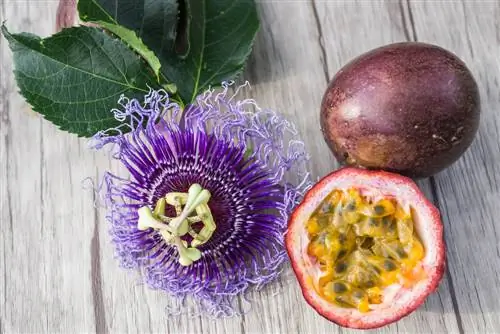- Author admin [email protected].
- Public 2023-12-16 16:46.
- Last modified 2025-01-23 11:20.
The dragon fruit stands out the most among all exotic fruits with its extraordinary appearance. Pitahaya has its origins in tropical climates in Central America. It is now also cultivated in many Asian countries.

Where does dragon fruit come from?
The dragon fruit, also known as pitahaya, originally comes from the tropical climates of Central America, such as Nicaragua, Guatemala and Colombia. Today it is also grown in Asian countries such as China, Vietnam, Sri Lanka, Thailand and Israel.
Origin
The dragon fruit belongs to the cactus family and originally comes from Central America. There it grows in the coastal lowlands and also in the high altitudes of Nicaragua, Guatemala and Colombia. The plant requires temperatures between 35 and 40 º C and a certain annual rainfall for good growth.
The most commonly cultivated species is Hylocereus undatus. The peel of the ripe dragon fruit is bright pink and the flesh is white or pink (hylocereus monacanthus). Hylocereus megalanthus with yellow skin and white flesh is less common. The climbing cactus grows to be several meters high and can climb walls or trees with its roots.
Usage
The fully aromatic dragon fruit is best enjoyed raw. You proceed as follows:
- The peel of the ripe fruit can be easily removed, it is best to start at the base of the flower,
- Dice the pulp and enjoy as a fruit salad
or
- cut the fruit in half lengthwise, creating two decorative-looking dessert bowls,
- simply spoon out the pulp.
growing countries
Today, dragon fruit is grown in many tropical climates, especially in Asian countries such as China, Vietnam, Sri Lanka or Thailand, but also in Israel. The dragon fruits come to the German fruit trade from Israel and Vietnam from June to December, and we receive deliveries from Thailand and Nicaragua all year round.
The color pigments obtained from the peel of dragon fruit are used in the production of cosmetics and food colors. In the growing countries, the abundant dragon fruits are often used to decorate buffets or made into soft drinks. It is possible to grow the pitahaya plants yourself, but you will still have to buy the fruits.
Tips & Tricks
The juicy, sweet-sour, refreshing-tasting pulp of the Pitahaya can be easily processed into smoothies or frozen into ice cream.






